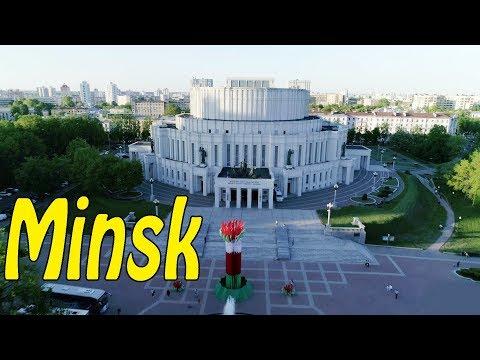I had always been enchanted by the idea of visiting Minsk, the capital of Belarus. Its name alone evoked a sense of mystery and adventure. It was a city I had only ever encountered through the fragments of travel blogs and fleeting mentions in documentaries. So, when the opportunity finally presented itself, I jumped at the chance, eager to explore the heart of Belarus.
Upon my arrival, the first thing that struck me about Minsk was its striking blend of old-world charm and modern vibrancy. The city felt like a living, breathing paradox—its streets lined with Soviet-era architecture juxtaposed against sleek, contemporary buildings. I began my exploration at Independence Square, a sprawling expanse surrounded by grandiose structures. The monumental House of Government stood like a sentinel, while the massive Lenin Monument looked over the square with an air of stoic authority. I couldn’t help but marvel at the sheer scale of these edifices; they seemed to whisper the secrets of Minsk’s storied past.
As I wandered through the square, I found myself drawn to the Belarusian State Museum of the Great Patriotic War. The museum’s somber facade belied the profound depth of history within. Inside, I was greeted by exhibits that narrated the harrowing tales of resilience and bravery during World War II. The museum’s collection was vast and meticulously curated, with artifacts ranging from military uniforms to poignant photographs. Each display told a story of courage and sacrifice, painting a vivid picture of Belarus’s role in the war.
Leaving the museum, I strolled down the Avenue of the Victors, a thoroughfare lined with imposing statues and monuments. It was here that I first encountered the local people of Minsk—an eclectic mix of warm, engaging individuals who seemed to embody the spirit of their city. I struck up a conversation with a gentleman named Igor, who was more than happy to share his insights about Minsk. He spoke with a palpable pride about the city’s resurgence and the remarkable changes it had undergone in recent years. Igor’s stories offered a glimpse into the heart of Minsk, revealing a place that was both deeply rooted in its history and ardently forging ahead.
My next destination was the Upper Town, a charming area that seemed to exist in its own time capsule. The cobblestone streets and quaint buildings created an atmosphere of old-world allure. I visited the Church of St. Simon and St. Helena, often referred to as the Red Church due to its striking red brick exterior. The church’s interior was equally captivating, with its intricate stained glass windows casting a kaleidoscope of colors on the polished wooden pews. I sat quietly for a moment, absorbing the serenity of the space and reflecting on the stories that this place must have witnessed over the years.
As the day turned into evening, I found myself in the vibrant district of Trinity Hill. This neighborhood, with its lively cafes and eclectic shops, seemed like the perfect place to experience the modern pulse of Minsk. I settled into a cozy café, where I enjoyed a cup of fragrant Belarusian tea while people-watching. The streets were alive with a mix of locals and tourists, each contributing to the district’s lively atmosphere. Music drifted from nearby bars, and the aroma of freshly baked pastries wafted through the air, creating an irresistible allure.
One of the highlights of my trip was a visit to the Minsk Botanical Garden. It was a serene oasis amidst the bustling city, offering a respite from the urban rhythm. The garden’s diverse collection of plants and flowers was a testament to nature’s splendor. I meandered through the lush greenery, marveling at the vibrant blooms and the tranquility that enveloped me. It was here that I felt a deep connection to the natural beauty of Belarus, a stark contrast to the city’s grand architecture and historical sites.
My final day in Minsk was dedicated to exploring the local arts scene. I visited the National Art Museum, where a rich collection of Belarusian art provided a window into the country’s creative soul. The museum’s exhibits showcased a range of styles, from classical works to contemporary pieces that reflected the evolving artistic landscape of Belarus. I was particularly struck by the vibrant, abstract paintings that seemed to pulse with energy, capturing the essence of a city in transition.
As I prepared to leave Minsk, I reflected on the experiences and people that had made my visit so memorable. The city, with its mix of historical gravitas and modern dynamism, had offered me a unique and enriching journey. From the solemnity of its war memorials to the lively buzz of its cafes, Minsk revealed itself as a city of contrasts—a place where the past and present coexisted in a delicate, harmonious dance.
Minsk had not only introduced me to its own rich tapestry of sights and experiences but had also connected me with its people, whose stories and warmth left a lasting impression. As I boarded my flight, I carried with me a deep appreciation for this fascinating city and the indelible memories of my time there. Minsk had proven to be a city of hidden gems and unexpected encounters, and I knew that its charm would stay with me long after my departure.
